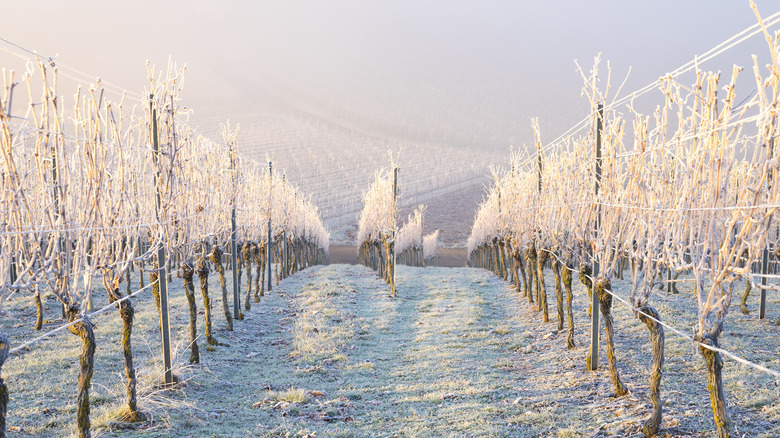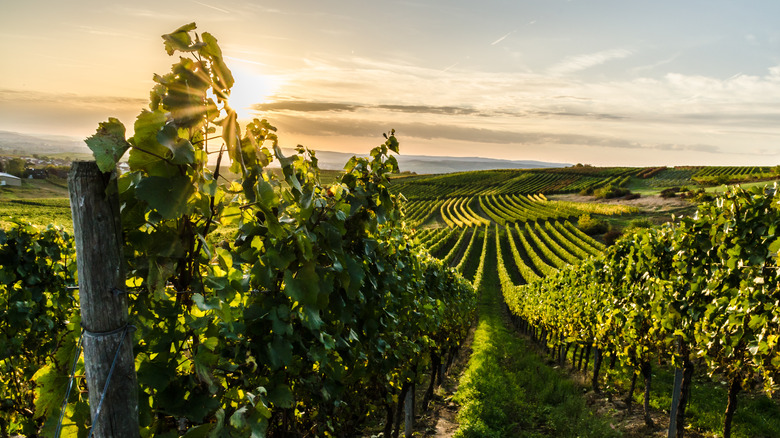How Climate Change Could Make Arctic Wines More Prevalent
In particular, over the past few decades, we have witnessed a dramatic change in weather around the globe. Climate change has heightened the destruction caused by natural disasters such as storms, droughts, and floods, and at the same time temperatures have been rising swiftly (via USGS). These rising temperatures are already having an effect on the wine world, in particular, the vineyards. Wine growers are noticing that once, where certain grape varieties thrived, they are now struggling with drought and scorching temperatures. And, on the west coast of the United States — in California, Oregon, and Washington growing regions — whole harvests have been decimated by the effects of forest fires, which Reuters says can give smoke damage to any grapes within a hundred-mile radius.
According to the U.S.'s Proceedings of the National Academy of Sciences, the world's major wine viticulture areas – some of which have been established for centuries — are estimated to decrease by up to 73% in size by 2050 and may be forced to relocate to higher elevations and higher latitudes. So, as the years go on, the next great wine regions could take stake further north, possibly in the Arctic.
Wine growers are considering Sweden, Norway, and Finland
The BBC impresses upon the fact that heat waves, drought, and wildfire smoke have dealt severe damage to what were once ideal wine viticultural areas. These massive climate changes are creating historically low harvest yields in Europe and North America, forcing wine growers to contemplate new northern territories that will soon become much more temperate in climate and amiable to grape production.
The Independent says that one of the places wine growers are interested in expanding into more is the Arctic provinces of Sweden, Norway, and Finland. We have already begun to see a steady expansion northward with Denmark growing some fairly successful vineyards in the last decade. Most recently, the country of Sweden has been granted a European Union permit to grow 247.105 acres but it is believed the area has doubled and boasts several different wine varieties.
Right now, Wine Tourism says that the regions of Scania and Södermanland are the main wine areas in Sweden and primarily grow Regent, Leon Millot, Pinot Noir, Merlot, and Chardonnay grapes. But, as the country warms, we expect to see more regions opening up and varietals being explored not only in Sweden but in other chillier parts of the world.

